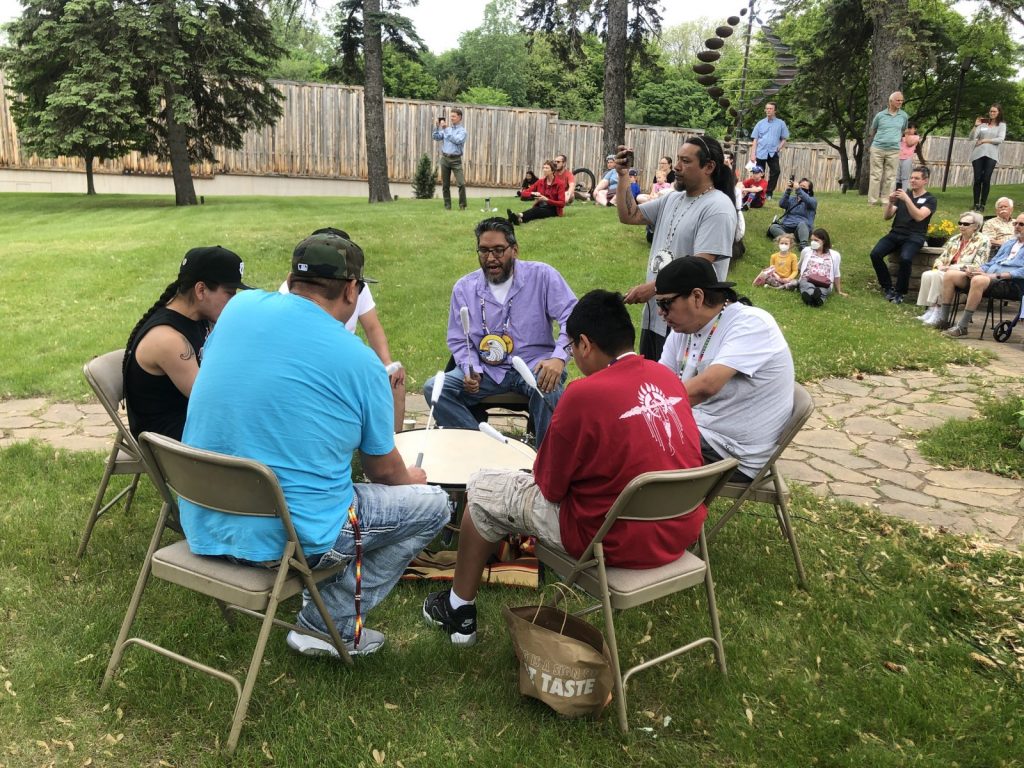Rethinking History: Golden Valley Establishes a Land Acknowledgment
Golden Valley Land Acknowledgement Helps Rethink History
The city of Golden Valley established a land acknowledgment in May to honor indigenous people who lived on the land where the city is today.
“When I checked out the book on the history of Golden Valley, it starts when a white person arrives here,” said council member Gillian Rosenquist, a council member discussing the acknowledgment in a May meeting. “That’s literally erasing the history of the area.”
In 2019, the council directed the Human Rights Commission (HRC) to research and submit a recommendation regarding a land acknowledgment. The HRC worked with the Diversity, Equity and Inclusion Commission to develop the statement. To read the documents and the statement, click here.
The council voted to accept the land acknowledgment and read a portion of it at future meetings and city events. Valley Community Presbyterian Church hosted an event to learn more about Native Americans.
‘We Need Action’
By definition, ‘history’ is an official record of a significant event, and according to Golden Valley archives, the first pioneers settled here in 1852.
But what may come as no surprise is that Native Americans lived in this area well before the mid-1800s.
Educating people about that largely undocumented history was the impetus behind an event at Valley Community Presbyterian Church on June 4.
“What we’re doing is we’re learning,” said Pastor Richard Buller of Valley Community Presbyterian Church. “We’re learning all about how to be better neighbors in this community.”
In April of 2021, the church began the work of researching and creating a land acknowledgement statement to learn about the Dakota land that the church occupies.
“This project is important because it helps us to fill gaps in knowledge and understanding of our native neighbors and to learn about their stories,” said Crystal Boyd of Valley Community Presbyterian Church.
But church leaders wanted to go beyond words on a piece of paper.
“To do a land acknowledgment statement well and responsibly and respectfully, we need action,” said Dr. Kasey Keeler, an assistant professor of American Indian Studies at the University of Wisconsin in Madison.
Over the last year, Keeler has partnered with the church on an oral history project to learn more about native people who have lived, or currently live, in the Bassett Creek watershed area, also known as Haha Wakpadan.
“So much of this work is to really acknowledge not only the history of native people in suburbs,” Dr. Keeler said. “It’s thinking about that land acknowledgment. That forced removal. That exile. But recognizing that native people are here today. That suburbs truly are historically Indian places when we think about the west metro.”
Dr. Keeler used this event to teach others about what’s not mentioned in Golden Valley’s historical archive.
It’s a difficult, yet important conversation, and she hopes others follow suit.
“We know that people who are alive today weren’t direct participants in the events that happened in the mid-19th century,” Dr. Keeler said. “But we are benefactors of those events.”

Native American drummers participate in a land acknowledgement event at Valley Community Presbyterian Church.
What happens next?
Randy Gresczyk, director of American Indian Education at Anoka-Hennepin Schools and an Ojibwe language instructor, says there are some action steps to take after developing a land acknowledgement. The first is to make sure an indigenous person does not read the statement during events. Then, do some actual work with an indigenous elder.
“Let’s do some actual work and work with people. Let’s work with indigenous people who know the areas, that know some of these histories that are not written down per se,” said Gresczyk.
Earlier this spring, the Golden Valley Historical Society started work on on a project to inventory and catalog Native American resources in their collection. The project has been funded by a grant. You can learn more about their efforts here.
Curious about learning more about Diversity, Equity, and Inclusion issues like this?
Check out the Diversity Minute series by Dr. Rassheedah Watts,
Shannon Slatton also contributed to this report.


